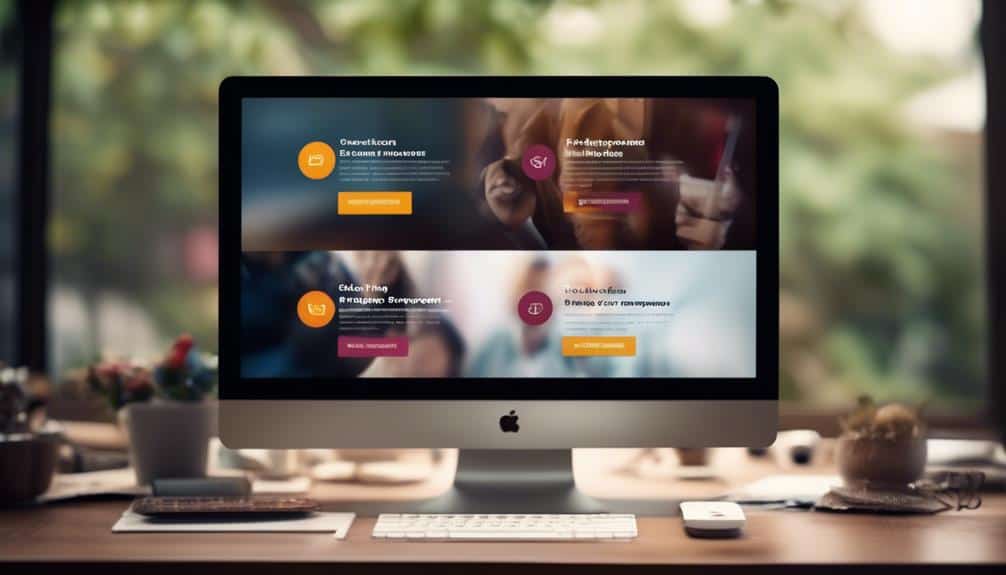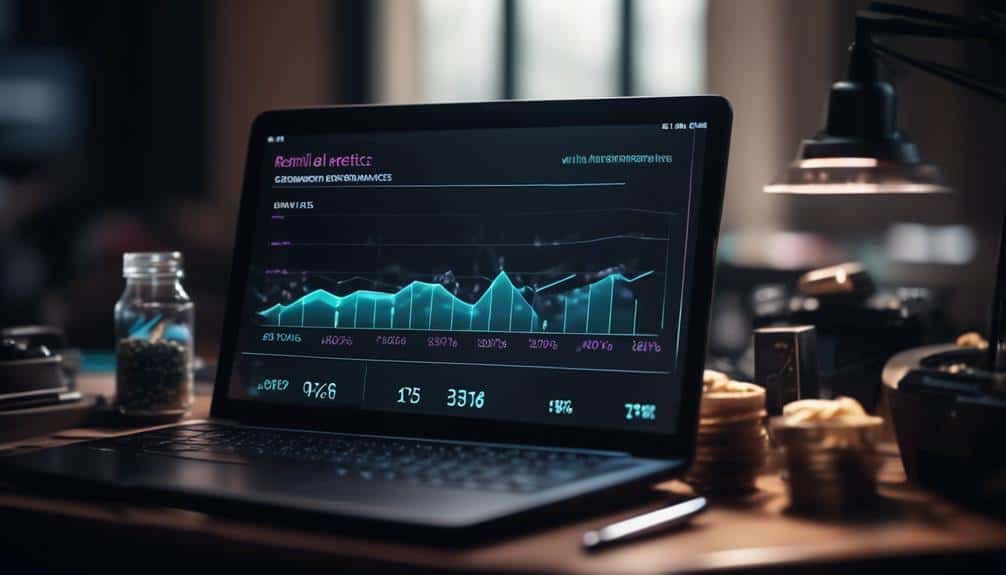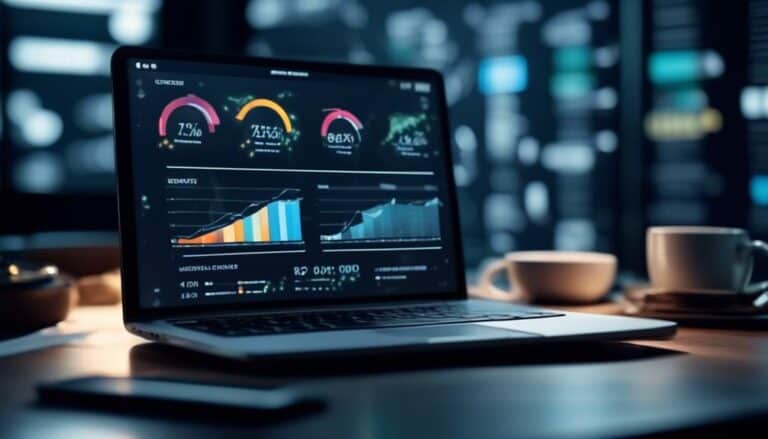Time-Sensitive: Advanced Tactics for Flawless Automated Email Sequences
In the fast-paced world of email marketing, time is of the essence. Like a well-oiled machine, your automated email sequences need to run flawlessly, capturing your audience's attention and driving them towards action.
But how can you ensure that your emails hit the mark every single time? Well, buckle up, because we're about to reveal some advanced tactics that will take your email game to the next level.
From strategic audience segmentation to crafting compelling subject lines, designing visually appealing templates to leveraging behavioral triggers, this discussion will equip you with the tools you need to create time-sensitive email sequences that truly stand out from the crowd.
So, are you ready to unlock the secrets of flawless automation?
Key Takeaways
- Utilize audience segmentation and personalization to tailor your automated email sequences to specific groups with similar characteristics.
- Design and optimize your emails for mobile users, incorporating interactive elements and clean, clutter-free layouts that align with your brand identity.
- Consider the habits and preferences of your target audience when scheduling your emails, using A/B testing to determine the optimal send times for maximum engagement.
- Analyze the performance of your automated email sequences through performance analysis and data-driven decisions, making improvements based on metrics such as open rates, click-through rates, and conversions.
Segmenting Your Audience Strategically

To strategically segment your audience, you must understand their unique needs and preferences. Segmentation strategies are crucial for effective audience targeting. By dividing your audience into specific groups based on their demographics, behaviors, and interests, you can deliver personalized content that resonates with each segment. This approach allows you to cater to the diverse needs of your audience and build stronger connections with them.
There are several segmentation strategies you can employ. One approach is to segment based on demographic data such as age, gender, location, and occupation. This helps you tailor your messages to specific groups who share similar characteristics and preferences. Another strategy is behavioral segmentation, which involves analyzing how your audience interacts with your brand, such as their past purchases or engagement with your website. By understanding their behaviors, you can create targeted campaigns that address their specific needs.
Audience targeting isn't about sending the same generic message to everyone. It's about delivering relevant content to the right people at the right time. By incorporating segmentation strategies into your email marketing campaigns, you can increase open rates, click-through rates, and conversions. This personalized approach shows your audience that you understand their needs and are dedicated to serving them.
Crafting Compelling Subject Lines
Craft compelling subject lines that grab your audience's attention and entice them to open your emails. Crafting attention-grabbing subject lines is crucial to increasing open rates through subject line optimization.
To serve your audience effectively, you need subject lines that are concise, persuasive, and personalized. Start by understanding your audience's needs and desires, and then tailor your subject lines to address those specific pain points or offer irresistible solutions. Use language that resonates with your audience and speaks directly to their interests.
With limited space, every word counts, so avoid fluff and strive for clarity, conciseness, and precision. Experiment with different techniques like using numbers, asking questions, or creating a sense of urgency to capture your audience's curiosity. Test different subject lines and analyze the results to see which ones perform best.
Designing Visually Appealing Email Templates

Start by designing visually appealing email templates that capture your audience's attention and enhance the overall user experience. To ensure your templates are effective, it's essential to consider mobile users. With the increasing number of people accessing emails on their mobile devices, designing mobile-friendly templates is crucial. Optimize your templates for mobile screens by using responsive design techniques, such as using a single-column layout, large and legible fonts, and clear call-to-action buttons.
Another way to make your email templates visually appealing is by incorporating interactive elements. Interactive elements, such as image carousels, accordions, and buttons that trigger actions, can engage your audience and encourage them to interact with your emails. By including interactive elements, you can create a more immersive and dynamic experience for your subscribers.
Remember to keep your design clean and clutter-free. Use white space effectively to highlight important elements and make your content easier to read. Use colors and graphics that align with your brand identity to create a cohesive and visually pleasing email template.
Personalizing Content for Higher Engagement
Now that you have designed visually appealing email templates, it's time to take your engagement to the next level by personalizing your content. Personalization techniques for email marketing can significantly boost your engagement rates and connect with your audience on a deeper level.
Here are three strategies for increasing engagement through personalized content:
- Segment your audience: Divide your email list into different segments based on demographics, interests, or past interactions. This allows you to create content that's tailored specifically to each segment's needs and preferences. By sending relevant and personalized emails, you can increase open rates and click-through rates.
- Dynamic content: Use dynamic content in your emails to display personalized information based on your recipient's behavior or profile. This could include showing product recommendations based on their browsing history or customizing the email based on their geographic location. By delivering content that's highly relevant and timely, you can capture your audience's attention and drive them to take action.
- Personalized subject lines: Craft subject lines that speak directly to your recipient. Use their name or reference previous interactions to create a sense of familiarity and connection. Personalized subject lines can grab attention in a crowded inbox and increase the chances of your email being opened.
Timing Your Email Sends for Optimal Impact

You know that timing is everything when it comes to sending emails. The perfect timing can make all the difference in getting your message noticed and acted upon.
In this discussion, we'll explore the concept of optimal send times and how impactful email scheduling can significantly improve the results of your automated email sequences.
Perfect Timing for Emails
Maximizing the impact of your email sends requires strategic timing and precision. When it comes to email open rates and click-through rates, timing is everything.
Here are three essential tips to ensure your emails are sent at the perfect time for optimal impact:
- Know your audience: Understand the habits and preferences of your target audience. Research their time zones, peak activity hours, and the days when they're most likely to engage with emails.
- Test and analyze: Experiment with different sending times and measure the results. Use A/B testing to compare open rates and click-through rates for different time slots. Analyze the data to identify patterns and trends.
- Automate your sends: Utilize email automation tools to schedule your emails in advance. Set up triggers based on subscriber behavior or time zones to ensure your messages are delivered at the most opportune moments.
Optimal Send Time
To ensure that your email messages have the greatest impact, it's crucial to consider the optimal send time for reaching your audience. Timing plays a significant role in capturing their attention and maximizing engagement. Understanding when your audience is most likely to be active and receptive to your emails is key.
You can determine the optimal send time by analyzing data on peak engagement for your specific audience. By identifying patterns in open rates, click-through rates, and conversions, you can pinpoint the best times to send your emails.
Additionally, consider the sending frequency. Bombarding your audience with emails may lead to fatigue and decreased engagement. Find the right balance by testing different sending frequencies and monitoring the response.
Impactful Email Scheduling
Timing is crucial when it comes to scheduling your email sends for optimal impact. To ensure your email automation campaigns are effective in grabbing your audience's attention and boosting open rates, follow these impactful email scheduling strategies:
- Consider your audience's time zone: Sending emails at a time when your recipients are most likely to be checking their inbox increases the chances of them opening and engaging with your message.
- Test different send times: Conduct A/B testing to determine the best time to send your emails. Experiment with different days of the week and various times within those days to identify the optimal send time for your specific audience.
- Analyze engagement patterns: Monitor your email analytics to identify patterns in open and click-through rates. This data can help you understand when your audience is most active, allowing you to schedule your emails for maximum impact.
Implementing A/B Testing for Continuous Improvement

Ready to take your email sequences to the next level? Implementing A/B testing is the key to continuous improvement.
By testing different variations of your emails, you can discover what resonates best with your audience and optimize your messaging for better results.
It's time to start testing and iterating for maximum impact.
Testing Methods for Optimization
Optimize your automated email sequences by implementing A/B testing for continuous improvement. Testing different elements of your emails allows you to fine-tune your strategies and achieve better results.
Here are three testing methods for optimizing your email sequences:
- Subject Line Testing: Experiment with different subject lines to find the one that grabs your audience's attention and boosts open rates. Test variations like personalization, emojis, or urgency to see which approach resonates best with your subscribers.
- Call-to-Action Testing: Test different CTAs within your emails to determine which ones drive the most clicks and conversions. Try different wording, button colors, or placement to optimize engagement and encourage recipients to take the desired action.
- Email Timing Testing: Test different send times and days of the week to identify the optimal timing for your audience. By analyzing open rates and click-through rates, you can determine when your subscribers are most likely to engage with your emails.
Implement these testing methods to continuously improve your automated email sequences and deliver better results for your audience.
Iterative Improvement Process
To continuously improve your automated email sequences, implement A/B testing for iterative enhancements. A/B testing allows you to compare two versions of an email to determine which one performs better. This continuous refinement process helps you make data-driven decisions and optimize your email sequences for maximum effectiveness. By conducting iterative analysis through A/B testing, you can identify the elements that resonate best with your audience and make informed adjustments to improve engagement and conversions.
Consider the following table, which showcases the power of A/B testing in email marketing:
| Test Element | Variation A | Variation B |
|---|---|---|
| Subject Line | "Limited Time Offer" | "Exclusive Discount" |
| Call to Action | "Shop Now" | "Get Your Discount" |
| Email Design | Simple & Clean | Colorful & Bold |
Through iterative analysis, you can determine the winning variations and implement them in future email sequences. This continuous improvement process ensures that your automated emails are always optimized for better results.
Integrating Dynamic Content to Increase Relevance
Increase the relevance of your automated email sequences by integrating dynamic content. Personalizing your emails based on the recipient's preferences and behaviors can significantly enhance engagement and conversion rates.
Here are three effective ways to leverage dynamic content in your email marketing strategy:
- Segment your audience: Divide your email list into smaller, targeted segments based on various criteria such as demographics, past purchases, or browsing history. By delivering tailored content to each segment, you can address their specific needs and interests, increasing the relevance of your emails.
- Use dynamic product recommendations: Incorporate personalized product recommendations based on the recipient's browsing or purchase history. By showcasing products they're likely to be interested in, you can drive higher click-through rates and ultimately boost sales.
- Implement real-time content updates: Deliver up-to-date content by dynamically pulling in information from external sources such as weather updates or live inventory availability. This ensures that your emails always provide the most relevant and timely information, enhancing the overall customer experience.
Leveraging Behavioral Triggers for Targeted Messaging

To take your email marketing strategy to the next level, harness the power of behavioral triggers to deliver targeted messaging that resonates with your audience. By implementing behavioral segmentation and personalized triggers, you can create email sequences that are tailored to each individual's interests, preferences, and actions.
Behavioral segmentation allows you to divide your audience into specific groups based on their behaviors, such as website visits, email opens, and purchases. This enables you to send emails that are highly relevant and timely, increasing the chances of engagement and conversion.
Personalized triggers take this a step further by sending automated emails triggered by specific actions or events. For example, if a customer abandons their shopping cart, you can set up an email sequence that sends them a reminder or offer to entice them to complete their purchase. This personalized approach makes your emails feel more authentic and meaningful to the recipient.
Optimizing Your Call-To-Action for Maximum Conversions
Maximize conversions by strategically optimizing your call-to-action button. To ensure that your call-to-action effectively drives conversions, consider the following:
- Clear and Compelling Copy: Craft concise and persuasive text that clearly communicates the value proposition of your offer. Use action-oriented language that motivates your audience to take the desired action. By using personalized language that resonates with your audience's needs and desires, you can create a sense of urgency and increase the effectiveness of your call-to-action.
- Eye-Catching Design: The visual appearance of your call-to-action button plays a crucial role in attracting attention and encouraging clicks. Use contrasting colors that stand out from the rest of your email and website design. Make the button large enough to be easily clickable on both desktop and mobile devices. Additionally, consider adding subtle animations or hover effects to make it more engaging.
- Strategic Placement: The placement of your call-to-action within your email or website can significantly impact its effectiveness. Experiment with different locations, such as above the fold, at the end of the email, or within the body copy. Additionally, consider using multiple call-to-action buttons throughout your content to increase visibility and provide multiple opportunities for conversion.
Monitoring and Analyzing Email Performance Metrics

Now that you have optimized your call-to-action for maximum conversions, it's time to delve into monitoring and analyzing email performance metrics. By utilizing email automation and performance analysis, you can gain valuable insights into the effectiveness of your email campaigns. This information will help you make data-driven decisions to improve your overall email marketing strategy.
Email automation allows you to automate various tasks, such as sending personalized emails based on user behavior or scheduling emails to be sent at specific times. By setting up automated sequences, you can ensure that your subscribers receive relevant and timely content. This not only saves you time but also increases engagement and conversions.
Performance analysis is crucial for understanding how your emails are performing. By tracking metrics such as open rates, click-through rates, and conversion rates, you can assess the effectiveness of your email campaigns. This data will help you identify areas for improvement and optimize your future email content.
Additionally, performance analysis can provide insights into subscriber behavior, allowing you to segment your email list and target specific groups with tailored content. This personalized approach will increase relevancy and engagement, leading to higher conversion rates.
Frequently Asked Questions
How Can I Effectively Segment My Audience to Ensure My Automated Email Sequences Are Reaching the Right People?
To effectively segment your audience and ensure your automated email sequences reach the right people, use techniques like demographics, behavior, and preferences. By tailoring your content, you'll improve deliverability and create a personalized experience that resonates with your subscribers.
What Are Some Best Practices for Personalizing Content in Automated Email Sequences to Increase Engagement?
To increase engagement in your automated email sequences, use personalization techniques. Tailor content based on your audience's preferences and behaviors. Incorporate strategies like dynamic content, personalized subject lines, and targeted offers to make your emails more relevant and compelling.
How Can I Determine the Optimal Timing for Sending Automated Emails to Maximize Their Impact?
To determine the optimal timing for maximum impact, consider the optimal frequency of sending automated emails. Use timing strategies based on recipient behavior and preferences to schedule emails for better engagement.
What Are Some Key Metrics I Should Be Monitoring and Analyzing to Measure the Success of My Automated Email Sequences?
To measure the success of your automated email sequences, monitor key engagement metrics like open rates, click-through rates, and conversion rates. These email performance indicators will help you gauge the effectiveness of your campaigns and optimize your strategy.
How Can I Integrate Dynamic Content Into My Automated Email Sequences to Make Them More Relevant and Engaging for Recipients?
To make your automated email sequences more relevant and engaging, integrate dynamic content based on user behavior data. A/B testing is important to ensure effectiveness. Personalize your emails to serve your recipients better.
Conclusion
In conclusion, by implementing advanced tactics such as strategic audience segmentation, compelling subject lines, and visually appealing templates, you can create flawless automated email sequences.
Personalized content and optimal timing are also crucial factors in engaging your audience effectively.
Additionally, dynamic content integration and targeted messaging through behavioral triggers can further enhance the effectiveness of your email campaigns.
Finally, optimizing call-to-action is essential for achieving maximum conversions.
To continuously improve, it is important to monitor and analyze email performance metrics.
By staying ahead of the competition and implementing these time-sensitive strategies, you can effectively engage your audience and achieve your desired results.








